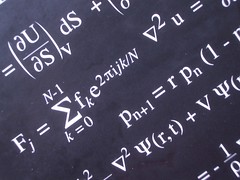 |
The paper `On the concept of a filtered bundle ‘ with Katarzyna Grabowska and Janusz Grabowski to appear in International Journal of Geometric Methods in Modern Physics is now `online ready’ and available for free for the rest of this October! |
In the paper we generalise the notion of a graded bundle – a particularly nice kind on non-negatively graded manifold – allow for coordinate changes that do not strictly preserve the grading `on the nose’, but instead include lower degree terms. The coordinate changes are thus filtered. It turns out that many nice things from the theory for graded bundles can naturally be generalised to this filtered setting. One of the nice results is that any filtered bundle is non-canonically isomorphic to a graded bundle, and so furthermore any filtered bundle is non-canonically isomorphic to a Whitney sum of vector bundles. We also show that the linearisation process as given in [1] also carries over to this filtered setting.
Many examples of the polynomial bundles found in geometric mechanics and geometric formulations of field theories are not graded bundles, but rather they have a filtered structure. In the paper we take an abstraction of some of the basic structure of jet bundles and similar with an eye for future applications. Hopefully some of these ideas will be useful.
References
[1] A.J. Bruce, K. Grabowska & J. Grabowski, Linear duals of graded bundles and higher analogues of (Lie) algebroids, J. Geom. Phys.,101 (2016), 71–99.